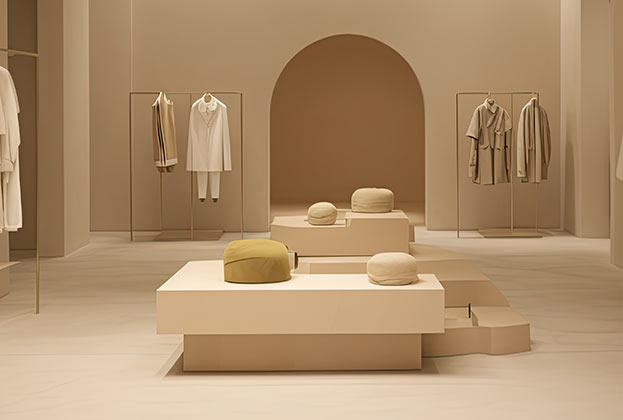As is true in any industry, the key to a competitive edge lies in how successfully a brand answers the dynamic appetites of its target market, be it to address their new lifestyle demands, to provide an incremental perception of luxury, or simply to accentuate brand appeal.
The rapid growth of the internet as retail distribution has, for some time now, placed increasing pressure on brick and mortar to find novel ways to reignite consumer interest, and remain relevant, or risk extinction.
Curiously, in an attempt to re-attract customers to their stores, the fashion industry has targeted their clients’ appetite—quite literally. In Madrid, several midrange brands like Adolfo Dominguez on Calle Serrano and Salvador Bachiller on Calles Montera, Gran Via and Alcala have incorporated cocktail lounges in their flagship stores, so customers could complement their shopping with a gourmet dining experience. The Italian Armani, Gucci, Prada, and Roberto Cavalli, the French Chanel, the British Burberry and the American Ralph Lauren have introduced their own versions of the dining lifestyle in select venues worldwide, a sure signal for other brands to follow suit.
However, this trend of including a complementary shop and eatery has long been visible in large department stores with bigger floor space, such as the ubiquitous El Corte Ingles. A few years ago, at least four branches of El Corte Ingles in Madrid – on Plaza Callao, Calle Goya, Calle Serrano and Paseo de la Castellana – opened gourmet dining areas. Now, H&M in Barcelona, and Primark in London both have their versions of restaurant and café respectively, positioned as waiting lounges and respites from shopping.
While it is impossible to cite a definitive cause for this current development in retail, a brief perusal of recent economic changes allows one to make an educated guess. As a result of Europe’s economic crisis, customers have become more pragmatic in their spending choices, hence the fashion retail industry finetuned their focus towards the one strength that online shopping sorely lacks – the personalized lifestyle experience.
An authentic customer-focused experience now lies less in getting the goods into consumers’ shopping bags as fast as possible, than in meeting their expectations of a face-to-face and intimate interaction. Why else would they forgo their constant sales offers on tablets, laptops and mobiles, and trot to the shops in the first place, if not for the sensation of touching the product, trying it on, chatting with a friendly boutique manager? Once one considers the sensory track, it is a short step to enhancing it with food. The sights, smells, and flavors of it may prove the irresistible balm to a harried shopper. Hence, more than simply applying traditional approaches like membership schemes, advanced sales, and other tricks, entrepreneurs are finding that the gourmet dining element completes the clients’ overall experience of a satisfying—or to put the bar higher, delightful— shopping trip. Food is an excellent marker for good memories, and coupled with great floor salespeople, it all bodes well for a lasting customer relationship.
To give the reader an example of this fashion-gourmet fusion trend, one only needs to visit the 9th floor of El Corte Ingles on Plaza Callao. Here the visitor is greeted by a spacious, open concept food court, packed with 11 attractive stalls rife with a tantalizing assortment of fine wines, exquisite cheeses, spiced meats and mouth-watering chocolates, all of which while overlooking the magnificent vista of the century old Gran Via. The place also offers the shoppers a cocktail bar. For an even more “exclusive” gourmet experience, one can visit the 3rd and 4th floors of Salvador Bachiller on Calle Montera, where patrons can feast on the brand’s very own selection of food and beverages within the confines of a secluded, secret open-air garden.
Entrepreneurs are finding that the gourmet dining element completes the clients’ overall experience
While no quantitative study is conducted, the application of this retail enhancement seems to be, in most parts, a positive. El Corte Ingles enjoys a resurgence among its clientele tickled by the thoughtful pampering. Perhaps the interesting proof of the effectiveness of shopping-cum-dining is the fact that the tables are turned nowadays. Madrid’s Vips bookstores have recently become just a restaurant chain. In London, Rovi on Wells Street, Lundenwic Pavilion, Natalie Hanover Square, and Fortnum & Mason, all set up shops themselves.
In the coming years, it is not unimaginable for the retail industry to mine the personal and sensory customer experience. Incorporating spas in personal care boutiques is probably not far off. Are we going to see shops with cinemas, or band acts in shops soon? Only time—and fast-changing economic fortunes—will tell.
.jpg)



.jpg)




.jpg)
